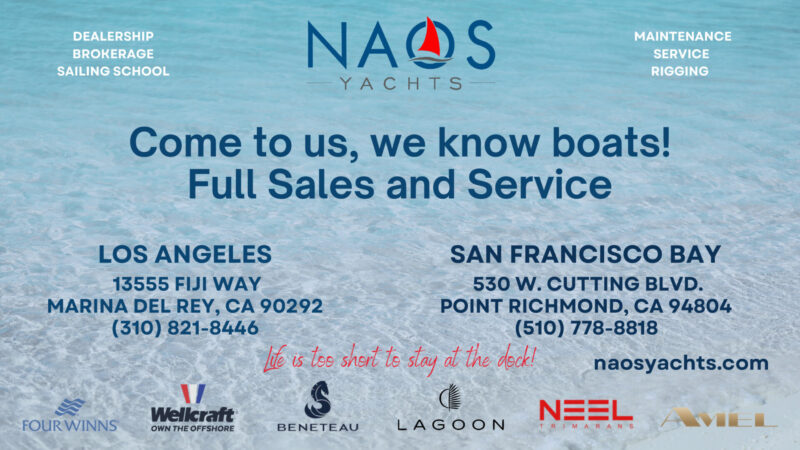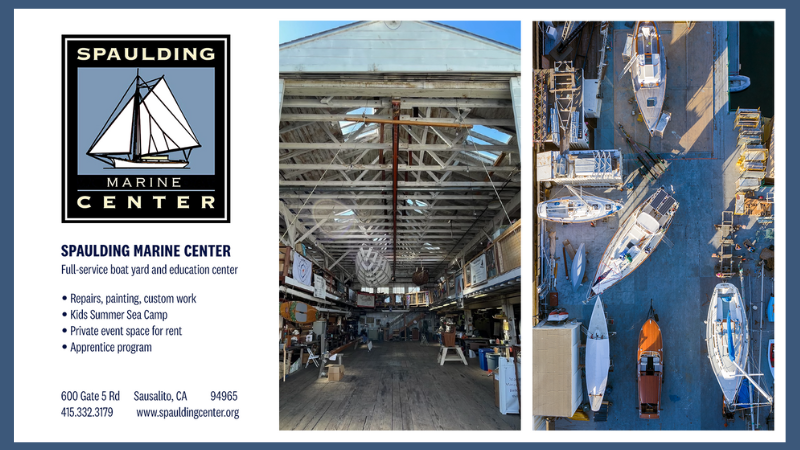
Operation Covering ‘Eagle’
We found ourselves outside the Golden Gate Bridge, bashing through lumpy chop aboard a 45-ft Coast Guard Response Boat-Medium (RBM) packed to the gills with people wearing stock West Marine lifejackets. Through the gray, USCGC Eagle’s tall, slender silhouette became visible. We’d be aboard the tall ship in about 20 minutes.
“Getting out there was half the fun,” my co-worker Nicki Bennett said in an Instagram post. She’d invited former Latituder Mitch Perkins and me on a media tour of Eagle, though I was imagining climbing aboard at the Embarcadero and not at the mouth of the Bay. This sportier, on-the-water version was a welcome upgrade and an adventure unto itself, and it reaffirmed everything Latitude 38 has thought about the Coast Guard — namely, that they’re an exceptional group of people calmly doing extraordinary things.
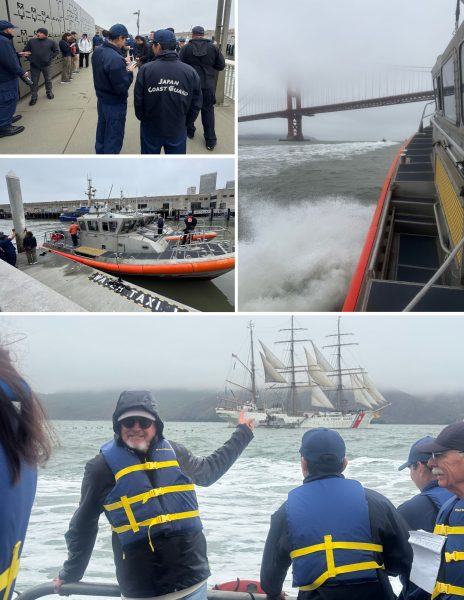
Three Coast Guard boats carrying a total of about 40 people turned toward the inbound Eagle and lined up on the 295-ft barque’s starboard side to load passengers. For a moment, I imagined that we might be climbing a Jacob’s ladder. I was game, but wondered just how sporty this adventure would get. It was no small thing to be bobbing around on a small boat outside the Bay. It was very cold and loud, and salty spray occasionally misted over us.
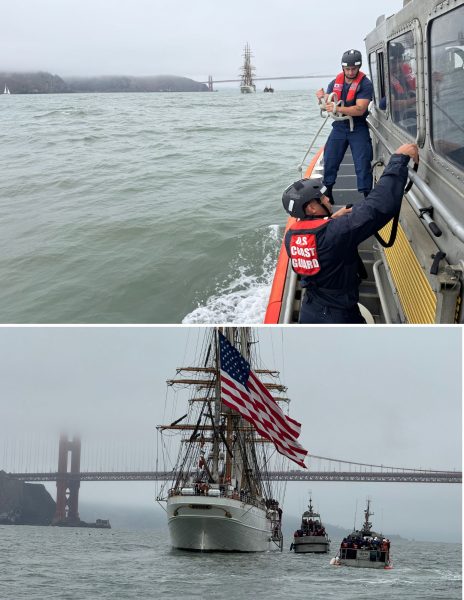
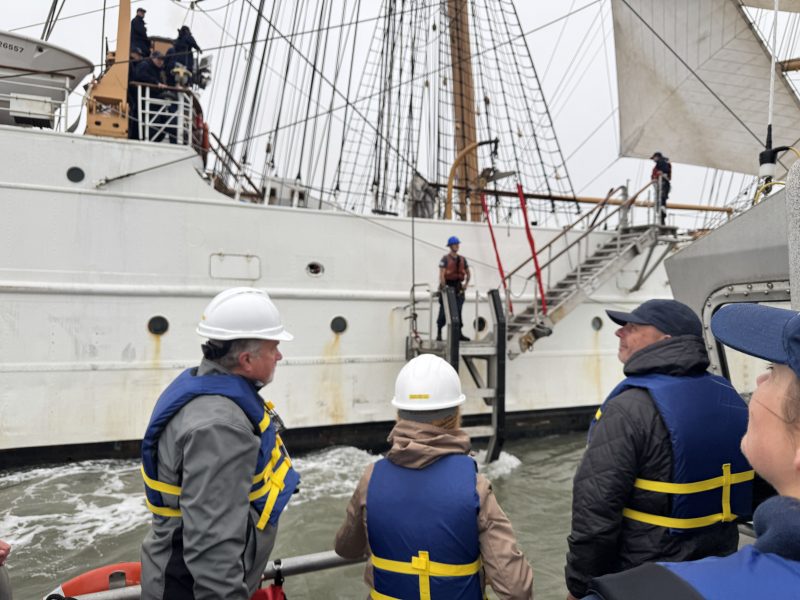
But we were riding with the Coast Guard, after all. Fenders were deployed, the RBM inched closer, and Eagle went from a speck to a hulking ship above us. A proper gangway was waiting. In moments, we were standing on the steady ship. The sudden juxtaposition was stark.
“Welcome aboard,” said a few cadets, some of whom were in their more formal dress uniforms, though most people were in navy-blue utilities. There were perhaps 250 people aboard; it didn’t feel crowded, but it was busy. We were midships, standing in a well between the raised ends of the ship, the Bay barely visible over the bulwarks. We ventured to the bow.
The black Coast Guard cutter George Cobb was on the Bay, two tugboats that would escort us to Pier 15, Matthew Turner under full sail, a handful of small sail and power boats, and the S.F. Fire Department vessel St. Francis firing its water cannons. A Coast Guard Dolphin helicopter circled, at one point flying low enough that you could see its downdraft darkening the water. It felt as though were were standing a few stories above the water.
It was a grand, spectacular scene. I imagined this is how being on a movie set might feel.
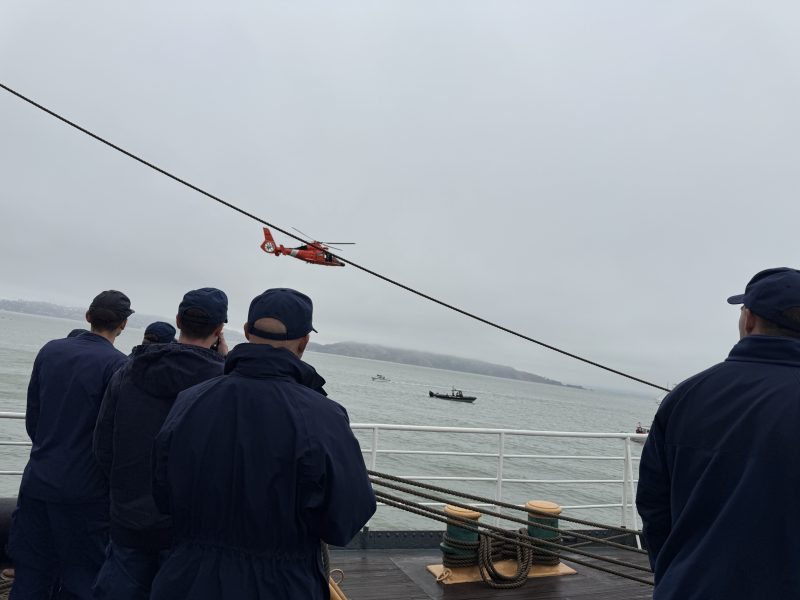
Here’s a how-the-sausage-is-made perspective of what it’s like to “cover” an event. You want to talk with people; you want quotes from individuals and facts about the vessel. But you don’t want to miss the bigger picture. You want to zoom out and watch the operation as a whole, especially on a big ship with a large crew and so many moving parts. Ideally, you can stand back and observe. (Ideally, you’d be embedded and spend a week onboard.) If you’re taking photos, however, you have to anticipate and watch for moments to come together.
I went below to use the head, which turned into its own exciting side quest. I realized that I could have gotten drawn into one of thousands of fascinating microcosms on the ship. I was having FOMO (Fear Of Missing Out). I tried to zoom out.
I was stunned by how young everyone was (which is, of course, a function of growing older), and how … happy the crew were and how much fun they seemed to be having. In that sense, it was similar to the small handful of other tall ships I’ve sailed on. On the bow, sails were lowered and a team of cadets heaved in unison. On the stern, a team of six stood at the three wheels and steered in unison. In the galley, a team washed dishes and prepared food … in unison.
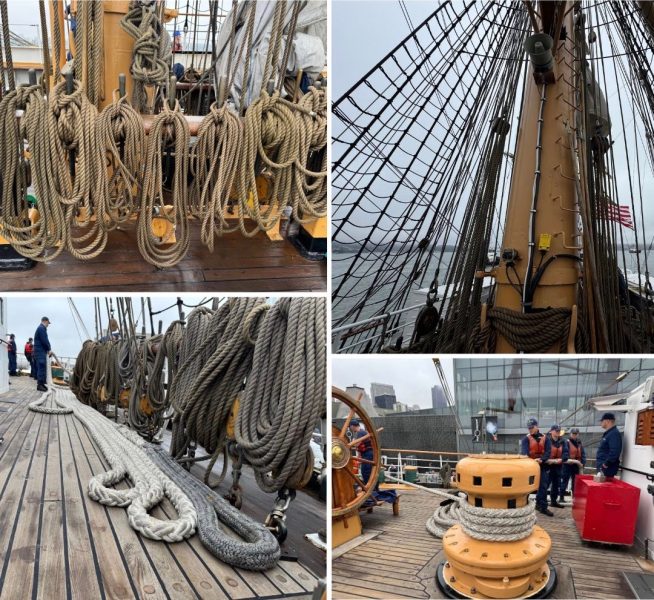
It’s not to say that the Coasties — from the person driving the RBM to the young man in a dress uniform who was essentially serving as a tour guide — weren’t serious about their tasks. There were salutes here and there (it is still the military), but everyone seemed to go about their business with what seemed to be a degree of joy.
“It’s really good to hear that you feel like you were seeing a positive vibe,” Captain Jessica Rozzi-Ochs told me. Rozzi-Ochs sailed aboard Eagle as a young cadet in 1996 and ’97, and became captain of the vessel in 2022. (Today, Capt. Kristopher Ensley relieved her as commander of Eagle.)
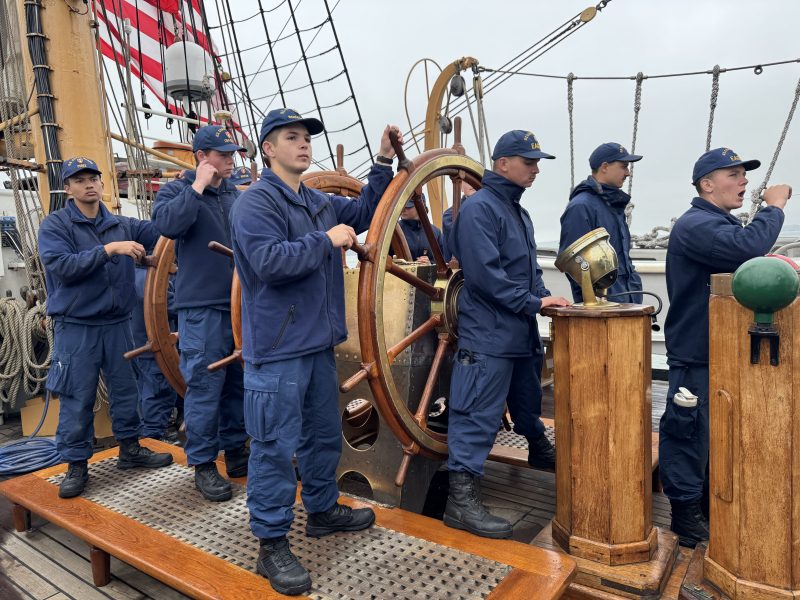
In my experience working as a reporter with the Coast Guard for the past eight years, I’ve noticed what I’ll call an easy competence that seems to pervade what they do. There’s not a lot of fuss; everything is a matter of fact, even what seem to us mere mortals to be incredible feats. Even onboard Eagle, in a training situation where a majority of recruits have never been on a boat, there’s an ease to all the operations. The size of the crew seems to help. Everything, from pulling lines, to moving the gangway to loading ice cream to steering the ship, everything is done with efficient teamwork.
“We have a 60-person permanent crew,” said Capt. Rozzi-Ochs. “They’re the ones that are maintaining the ship 24/7/365. They’re what I consider our instructors. They are teaching the cadets — we have about 140-plus cadets that are on board right now — how to paint, how to chip rust, how to steer the ship, how to do rounds in the engine room, how to climb the rigging; they’re sharing their experience and their passion with the cadets.”

My co-worker Nicki expertly covered the event, shooting video on her phone and putting together clips for a reel that she edited on the ferry back to Marin. She showcased the full experience, from taking the RBMs, to boarding the ship, to the gazillion lines being hauled and tasks being completed. I was thrilled to watch her work. I was thrilled to watch everyone work.
I will admit feeling a wistful yearning to be one of these kids who were part of the crew. The idea of joining the military was terrifying to me as an 18-year-old. I thought I would lose my individuality, but I’m now convinced I would have thrived in this environment and that, as life progressed, the sky would have been the limit.
“We try to empower our younger folks and give them an opportunity to drive the ship without having kind of a safety blanket to make sure that they’re not making mistakes,” Capt. Rozzi-Ochs said.
Del Rey Yacht Club Cat Harbor Layover Recap
Among the unique regattas in Southern California is Del Rey YC’s Cat Harbor Layover. The race attracted 53 boats on June 7–8. (53 boats are also racing in the 53rd Transpac, starting July 1.)
The Saturday race from Santa Monica Bay to Cat Harbor is a rare opportunity to sail down the backside of Catalina during daylight, with a dramatic finish at Cat Head. This year did not disappoint!
Light winds and flat seas with a favorable wind angle made for a quick crossing to the West End of Catalina. By then the sun had come out for some of the best sailing conditions found anywhere.
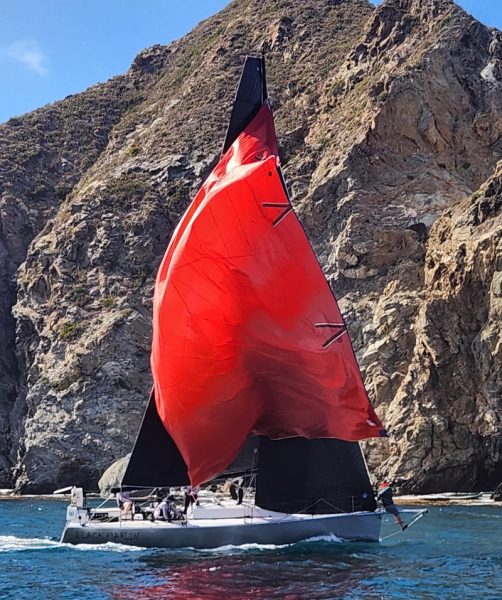
First across the finish line was Phil Friedman’s majestic Farr 85, Sapphire Knight. But it was Robert Dekker’s well-traveled J/105 Cuchuliann that corrected out first overall among the Performance division boats. In the Cruiser division, Scott Haisman’s Dehler 38 Soul Shine corrected out in first.

Rounding Cat Head can be tricky. Racers cannot see the wind conditions until they round Cat Head. The wind shifts, builds, and changes velocity. Some of the more experienced racers have their spinnakers ready to drop as soon as the wind shifts, while others get lucky and avoid the shift long enough to carry their spinnakers to the finish. When the sun is out, racers are greeted with green water and stunning cliffs on either side of the Cat Harbor entrance.
Saturday evening’s party ashore at DRYC’s Cat Harbor facility was packed with over 250 racers grilling their meats and sharing their culinary creations with other racers.
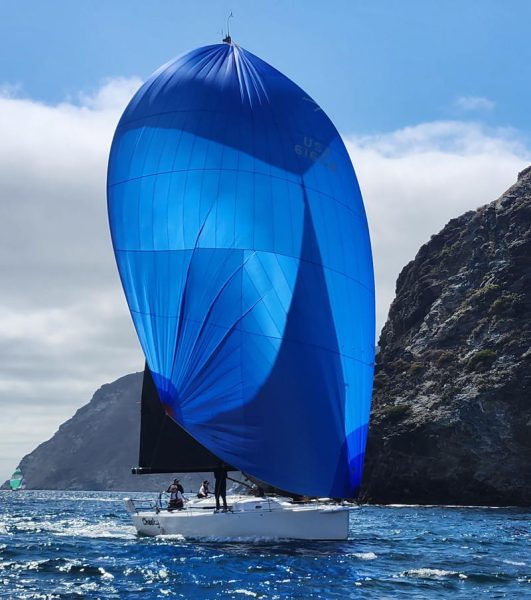
Following breakfast ashore, the Sunday race back to Marina del Rey starts off Eagle Rock. This is a dramatic place to start a race and a challenging line to set, but our guest RC boat skipper Steven Kantor knows just where a shelf exists to set an anchor off his Carver 54 La Vie En Rose.
As they passed the West End, everyone set their spinnakers for the reach through the San Pedro Channel, making for a lovely flotilla of colorful chutes across the horizon. Winds got light for awhile but built back up for quick sailing into Santa Monica Bay and exciting finishes as racers dropped their spinnakers before rounding the offset mark and hardening up to the finish line set off Ballona Creek. All boats finished by 1820, except for one racer with steering issues who had to be towed in.
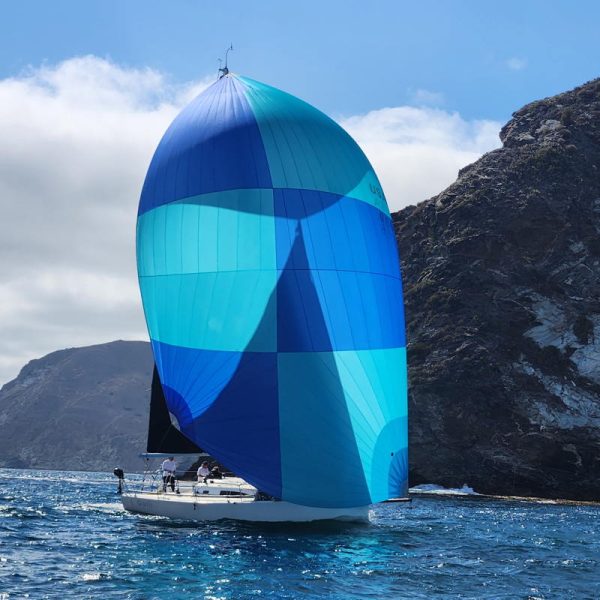
This time it was Daniel Murphy’s J/125 Javelin with line honors and Herwig Baumgartner’s ID35 Black Marlin correcting first overall in Performance divisions, with Scott Haisman’s Dehler 38 Soul Shine earning first overall in Cruiser division for the weekend sweep.
Del Rey YC has been holding layover races to Catalina since the 1960s, and to the backside of Catalina since the 1970s. It remains a popular event as racers are transported ashore by volunteers and received warmly at our Cat Harbor facility, which includes grills, picnic tables, a kitchen, and restrooms. We love sharing it with our racers for a taste of something different at Catalina.

The Cat Harbor layover races concluded both of DRYC’s seven-race Berger Series (for performance boats) and Stein Series (for cruisers). Two of the races were run in partnership with King Harbor YC and scored off each other’s results for different series. 98 boats total participated in at least one of the Berger or Stein series races for a total of 303 race registrations.
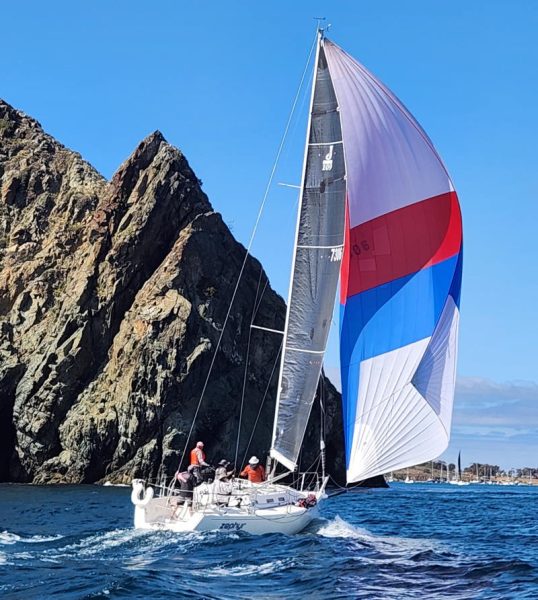
Congratulations to Berger Series winners: Bart McEntire’s Santa Cruz 37 Encore in Division 1, and Curt Johnson’s J/80 Avet in Division 2. Scott Haisman’s Dehler 38 Soul Shine won overall in the Stein Series for cruisers.
Looking ahead, DRYC will be sending racers back to Cat Harbor on Sept. 13 as we bring back the old “Ladies Got Guts” to Catalina race where women will be required to steer the entire race. On Sept. 20, DRYC is partnering with Channel Islands YC for our annual CI2MDR race, a 45-mile downwind course along some of California’s most scenic beaches. Race info at DRYC.org/racing.
Naos Knows Boats — Full Sales and Service in Two Locations
Shop new and used inventory with Naos Yachts with locations in the San Francisco Bay Area, and Los Angeles. We know all about boats — contact Naos Yachts.
Short Sightings — Salmon, Open House and ‘Bayesian’ Salvage
Small boats, big boats, and something fishy. The weather forecast for this last weekend in June looks good for sailing or anything on the Bay and California coast. Tomorrow, ocean racers will be taking off down the coast on the Half Moon Bay Regatta and enjoying a good dinner at the Half Moon Bay Yacht Club in the evening.
Cal Sailing Club Open House This Weekend
Do you have friends who always ask, “How do I get into sailing?” There are lots of great ways to get into sailing, one being the Cal Sailing Club in Berkeley. This volunteer-run club introduces hundreds of people a year, often starting with their monthly Open House. The next Open House/free sail will be held this Sunday from 1-3 p.m. at Berkeley Marina. Check it out: www.cal-sailing.org.
Golden State Salmon
On June 16 the Golden State Salmon Association (GSSA), in partnership with the California Department of Fish and Wildlife (CDFW), East Bay Municipal Utility District (EBMUD), the City of Richmond, and the Richmond Police Activities League (RPAL) released 200,000 juvenile salmon from the shoreline at 1500 Dornan Drive into the waters off Richmond. Local youth from RPAL rode aboard the Salty Lady, a charter fishing vessel owned and operated by Captain Jared Davis, to observe the release up close. It was the first time ever on a boat for many of the youth.
With the salmon fishing season closed the last two years and a very, very limited season this year, it’s hoped some of these salmon will help restore the salmon stock for future generations.
Sunken Superyacht Bayesian Raised to the Surface
Last year’s tragic sinking of the Perini Navi superyacht Bayesian has taken one more step in the ongoing investigation to understand how the 184-ft sloop went down in a squall while at anchor off the coast of Sicily. She has now been raised from 165 feet of water. As with many such disasters, there were probably a number of contributing factors, including the vessel’s 236-foot-tall single mast, as well as its unique position in an extremely severe weather incident. It will continue to take time to unravel the full sequence of events that resulted in the tragedy. You can see photos of the raised yacht on Facebook here.
NOAA Dropping Hurricane Data
According to an article in the New York Times, the National Atmospheric and Oceanographic Administration will stop providing data from satellites that help forecasters more accurately predict hurricanes. This is certainly a concern for boaters, coastal dwellers and insurance companies, who can expect larger losses due to less accurate forecasting. The data are scheduled to be halted on Monday. Nobody appears to know why the government would want to restrict data that save lives. You can read the full New York Times article here.
See you on the water.
Randall Reeves and Harmon Shragge Continue Around the Americas
Randall Reeves and Harmon Shragge are back on the water aboard Reeves’ 41-ft aluminum cutter Mōli for Leg 3 of their Around the Americas voyage — Newfoundland to Uruguay. The pair docked at St. John’s, Newfoundland, on September 21, 2024, after what Shragge described as “a life-changing journey” through the Northwest Passage starting at Kodiak, Alaska. Mōli was hauled and winterized in October, and in March, Reeves returned her to the water and began preparations for the passage to Uruguay.
Among other tasks, Mōli’s mast was reinstalled (removed due to the harsh winter weather), her bottom painted, batteries replaced, new Racor fuel filters installed, and a new, “well, pretty much rebuilt autopilot.” When Shragge arrived early this month, the attention was on restocking the pantry for the 10-week voyage from St. John’s to Uruguay, with island stops along the way.
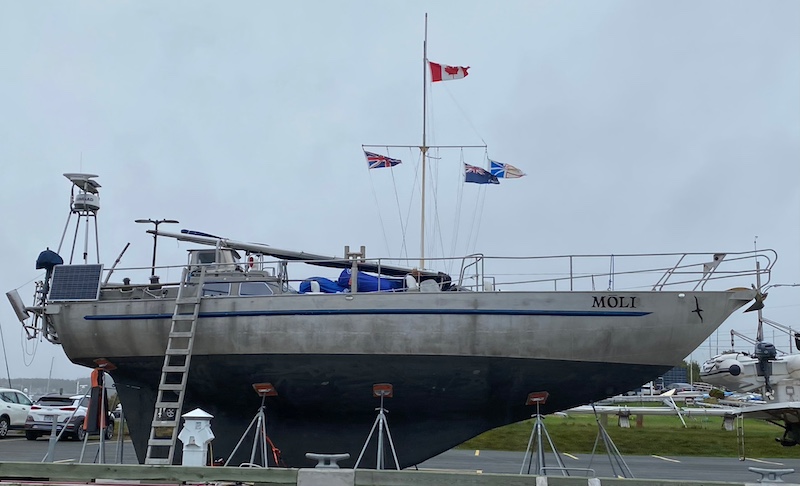
Anything “fresh” (less than two years old) was considered salvageable. “We threw away a ton of food that had gone bad, plus a mountain of food that was still good, but we decided that we would never eat,” Shragge wrote. “I.e. couscous, bags of Clif Bars, and six jars of jam (we kept five others).” They then provisioned at Costco, Walmart, and the local supermarket. They had great fun exploring the local produce, and in particular Taylor’s Fish, Fruit and Vegetable Market. “And this store had it all — cod tongues and cheeks, and lobster. These fishermen were bringing in five-pound live lobsters they had just caught, for sale at $8.99 a pound (Canadian!).”

They also discovered “old-world maritime staples” such as salt beef and hard tack. “These two foods provisioned much of the nautical world from the 1600s until the advent of refrigeration. Not sure why they are still in production but tradition dictates it so, and I guess that someone still dines on these ‘delicacies.'”

Once food had been taken care of, they moved onto the boat and refilled Mōli’s water and fuel tanks. It was then time to say their goodbyes and cast off.
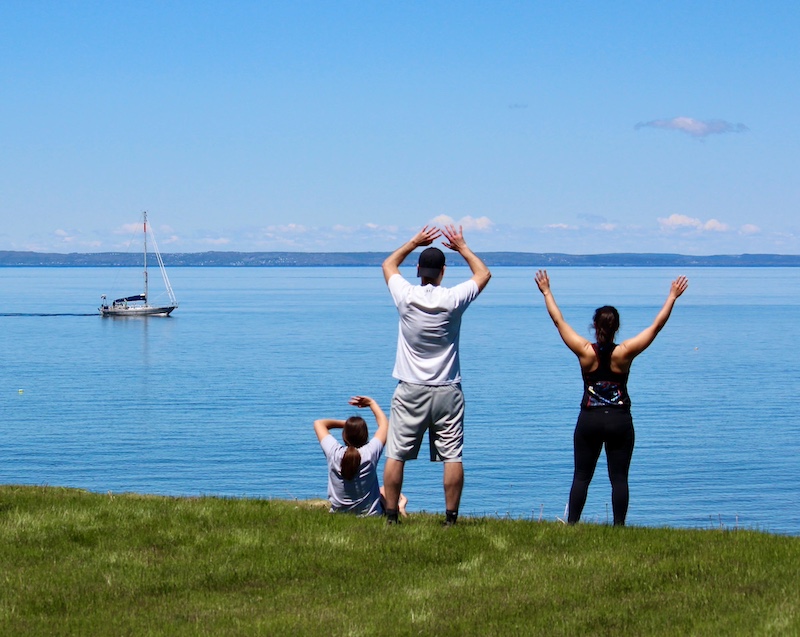
At the time of this writing, Mōli is at 38°16.872′ north and 27°41.611′ west. “Where’s that?” you ask. According to Google Maps, they’re mid-Atlantic in the region of the Azores Islands.
Reeves and Shragge’s Around the Americas Voyage will eventually bring them back to San Francisco via Cape Horn — but not before some thorough exploration of remote islands and far-flung countries.
What’s It Like? SV ‘Cetacea’ in the West Indies
Pacific Northwest sailors James Lane and Dena Hankins have been cruising for over a decade. Here’s their latest update.
So, we’ve been cruising the Caribbean now for eight months, and I gotta say, it’s not Hawaii, Bermuda, or anything like the Azores, not Cabo Verde; it’s not the Canary Islands, Madeira, no, and it’s totally not anything like the West Coast of the US, or the East Coast, for that matter. It’s its own thing! It’s a world of sapphire-blue water you can swim in without worrying about it killing you from the chill.
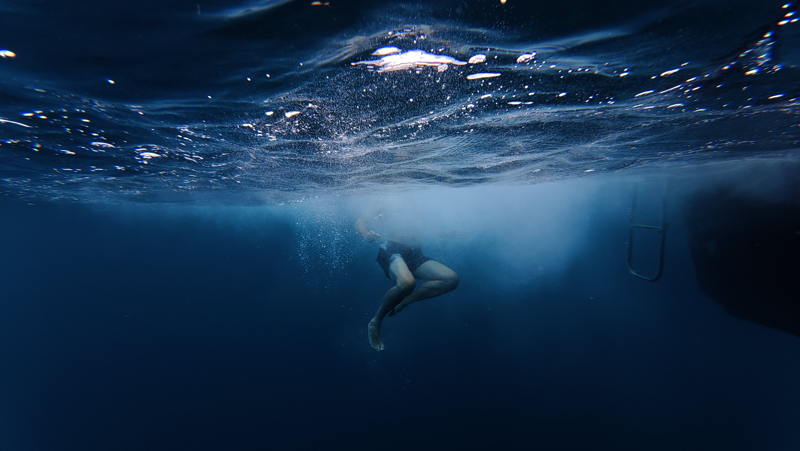
No doubt it’s a beautiful place, but at the same time, like most of the US and its territories, it’s politically tumultuous. Don’t get me wrong: It’s paradise, so “We The People” get along on a completely different level than in the States, but we are still very much a part of what’s going on in the political sphere of the world around us.-
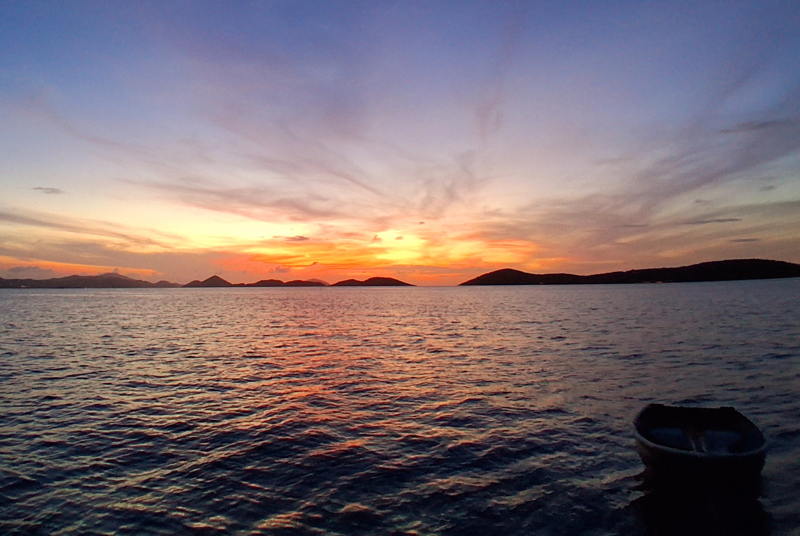
The sailing has been spectacular! Martinique, Dominica, St. Thomas, St. John, the BVI, and Puerto Rico have been amazing cruising grounds so far, and for the most part the weather has been consistently warm and windy since we made landfall on St. Thomas from Martinique this past December.
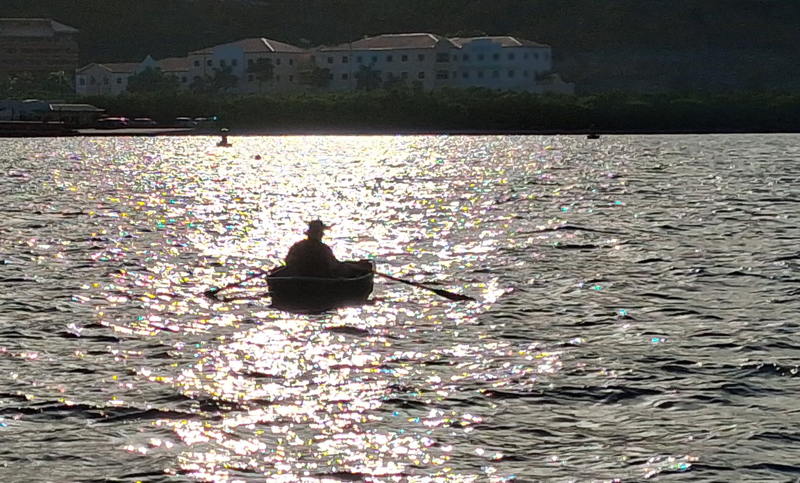
We have become very much attached to our local cruising grounds, Red Hook Harbor, Great St. James and St. John, all within a few hours’ sail from our mooring in Vessup Bay off the island of St. Thomas.
There’s a pizza boat in Christmas Cove off Great St. James, where you can see leaping manta rays and finning sharks while wolfing down a New York-style pie and a cold brew at anchor. In Caneel Bay off the island of St. John, the angelfish greet you in the hundreds and nibble at your skin like a giant living scrub brush.
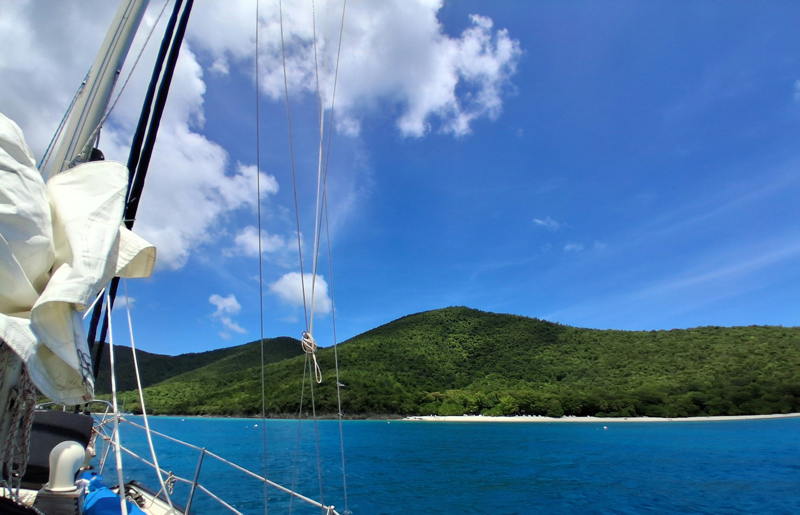
In Red Hook Harbor off St. Thomas, there are a dozen or so shipwrecks lorded over by hundreds of stingrays, like jealous sentinels protecting their hoard.
The Caribbean is very much still alive and we, the crew of SV SN-E Cetacea, are alive within her waters …
Fair winds, my friends.
Here’s a tale of James and Dena’s experience of the US Virgin Islands.

